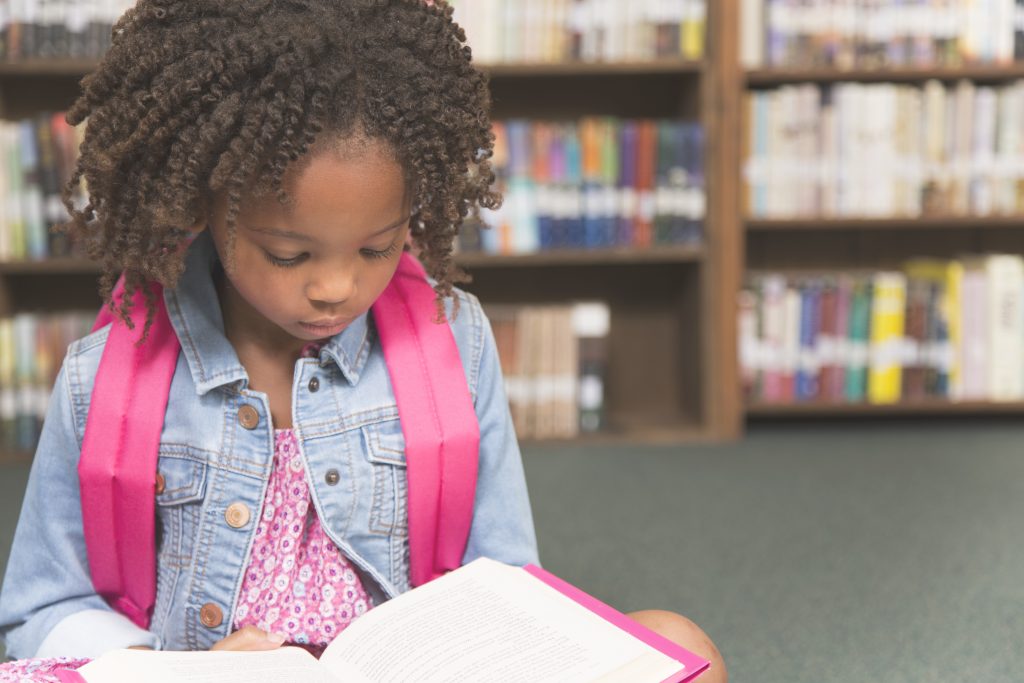We have identified nine unique book categories that capture the dominant messages conveyed by current children’s picture books featuring Black and Indigenous People and People of Color (BIPOC). Each book in our collection is tagged with at least one category. Anyone can use our book categories to consider how BIPOC are represented in a story to ensure that no single message dominates bookshelves.
What are our book categories? | Why do they matter? | How did we come up with them? | How do we tag the characters in a book? | How can YOU use our book categories and character tags?

What are our book categories?
Any Child

Books featuring BIPOC in which race, ethnicity, tribal affiliation, culture, im/migration, and/or religious, sacred, or origin stories are not central to the story. These elements may be present, but they are not essential to the plot and could be changed without altering the storyline. Click here for examples from our collection.
Beautiful Life: A Focus on Identity

Books featuring BIPOC in which race, ethnicity, tribal affiliation, culture, im/migration, and/or religious, sacred, or origin stories are central to the story. These books explicitly focus on the diverse expressions of human experience, depending on these elements to drive the storyline. Click here for examples from our collection.
Biography

Narrative nonfiction books about the life of a particular person or group of people from a historical or contemporary perspective. Click here for examples from our collection.
Cross-Group: Relationships Across Difference

Books portraying relationships between main or secondary characters across racial or cultural difference, including but not limited to those depicting peer group and cross-generational friendships. The interactions depicted may be positive, negative, or resolving. Click here for examples from our collection.
Folklore

Books featuring tales, proverbs, songs, or legends/myths that transmit the values, knowledge, traditions, practices/rituals of a people. These do not include religious, foundational, or origin stories, or indigenous traditional or sacred stories (see Beautiful Life above). Click here for examples from our collection.
Incidental: Ensemble or Background Characters

Books featuring a racially diverse cast of non-primary characters; or books featuring a white or animal main character(s) with BIPOC as secondary or background characters. Click here for examples from our collection.
Informational: Factual Content

Narrative books, with or without a storyline, presenting factual information; may be encyclopedic. BIPOC are depicted but race/culture is not always central to the content. Click here for examples from our collection.
Oppression & Resilience

Books about group-based injustice and struggles for justice. These include stories about BIPOC who experience and/or resist enslavement, internment, imprisonment, or violent conflict; persecution in or forced displacement from their homelands; or barriers to basic freedoms such as land, food, housing, education, health & wellness, and bodily autonomy. Click here for examples from our collection.
Race/Culture Concepts: Examining Difference and Commonalities

Books that explore and/or compare specific aspects of human difference, inviting readers to consider varying perspectives related to race, ethnicity, culture, or tribal affiliation. Click here for examples from our collection.
Want a printable color poster of these book categories? Sign up for our newsletter here!
Why do these categories matter?
Since the focus of our work is on identifying trends in representations of BIPOC from within the current landscape of ALL diverse picture books, we ask:
In the world of books currently featuring BIPOC:
- Which racial/cultural groups are represented and how?
- Are there patterns in these representations?
- If so, what are the messages they send about BIPOC?
This unique focus is how our categories came about -- and it's what makes our collection and data unique within the broader diverse books movement!
How did we come up with our book categories?
We paid attention to the dominant messages that emerged as we read books! First we read existing scholarship identifying particular themes that occur within diverse books. Then we spent months reading through our own collection, asking whether and how those themes still applied:
- Did they capture the messages we were seeing now?
- Did they apply to all racial/cultural groups?
- What fit or was missing?
We redefined, fine tuned, and added categories as necessary, ensuring that they reflected and were grounded in the books themselves -- a method called “grounded theory.” This painstaking process resulted in the development of the nine categories above.
How do we tag the characters in a book?
While our book categories are tagged based on the storyline, our tagging system can also help you pinpoint WHO is in a book based on the characters’:
- Race/Culture
- Ethnicity
- Tribal Affiliation/Homelands
- Religion
- Gender
- Im/migration status
So, a book with any of the character tags above indicates that a (main, secondary, or background) character in that story is depicted as a member of that group. We use a separate Setting tag to indicate where the story takes place. We also use a Content tag to identify subjects that often appear in diverse books, including but not limited to:
- Ability
- Class
- Sexuality
How can YOU use our book categories and character tags?
Combining our categories and character tags makes it possible for anyone -- librarians, educators, parents, book creators, and publishers alike -- to ask: “Who is represented and how are they represented in the picture books on my shelves?”
Since our collection is comprehensive, as well as searchable and accessible to anyone with a library card, you can use the Diverse BookFinder to build an intentional collection of picture books with a wide and balanced range of messages about BIPOC.
Check out our Collection Analysis Tool-- specifically designed for public and school librarians to "audit" the diversity of their picture book collections!
